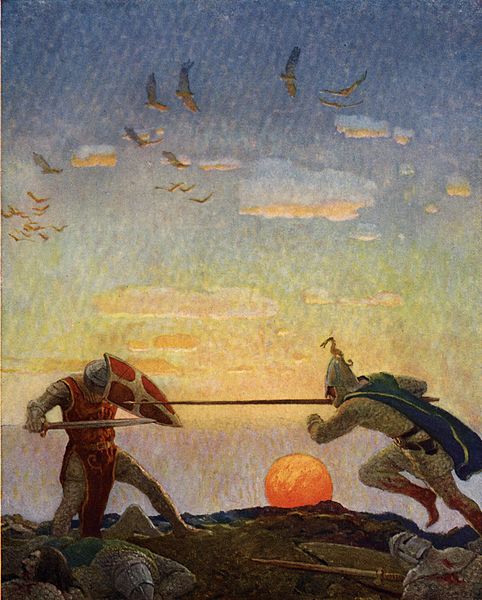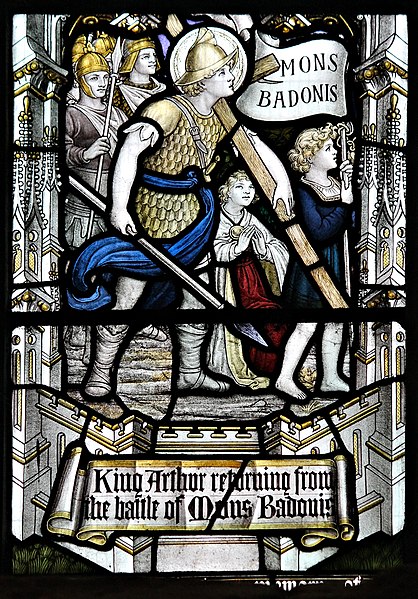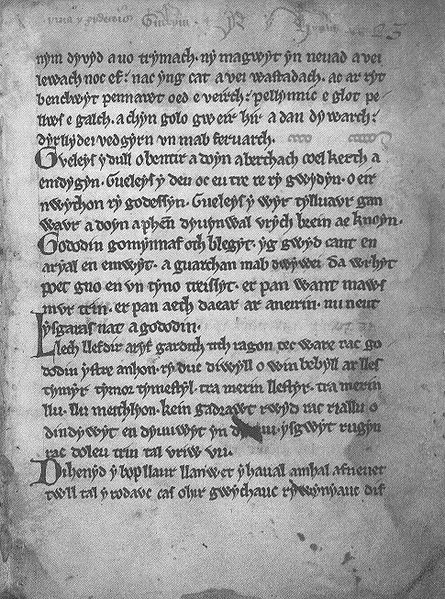Mordred or Modred is a figure in the legend of King Arthur. The earliest known mention of a possibly historical Medraut is in the Welsh chronicle Annales Cambriae, wherein he and Arthur are ambiguously associated with the Battle of Camlann in a brief entry for the year 537. Medraut's figure seemed to have been regarded positively in the early Welsh tradition and may have been related to that of Arthur's son.
"Winlogee" (presumed Guinevere) and "Mardoc" (possible Mordred) on the Modena Archivolt (c. 1120-1240)
N. C. Wyeth illustration for Sidney Lanier's The Boy's King Arthur (1922) "Then the king ran towards Sir Mordred, crying, 'Traitor, now is thy death day come.'"
Roddy McDowall as Mordred in the Broadway musical Camelot (1960)
King Arthur, according to legends, was a king of Britain. He is a folk hero and a central figure in the medieval literary tradition known as the Matter of Britain.
Tapestry showing Arthur as one of the Nine Worthies, wearing a coat of arms often attributed to him, c. 1385
King Arthur returning from the Battle of Mons Badonis (or Mount Badon). First reference to Arthur, found in early Welsh literature. Stained glass in Llandaf Cathedral, Cardiff.
Supposed former gravesite of Arthur at Glastonbury Abbey in Somerset
A page of Y Gododdin, one of the most famous early Welsh texts featuring Arthur (c. 1275)







